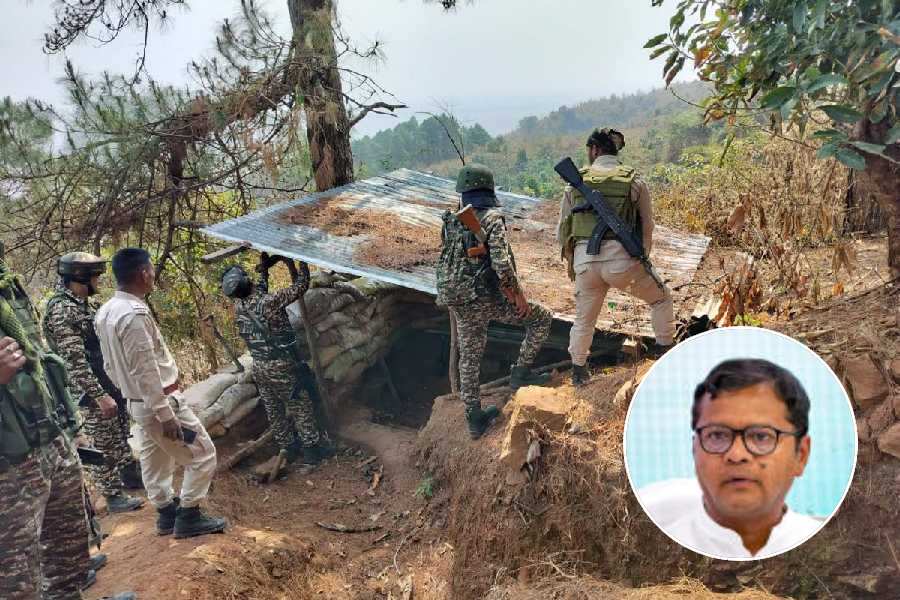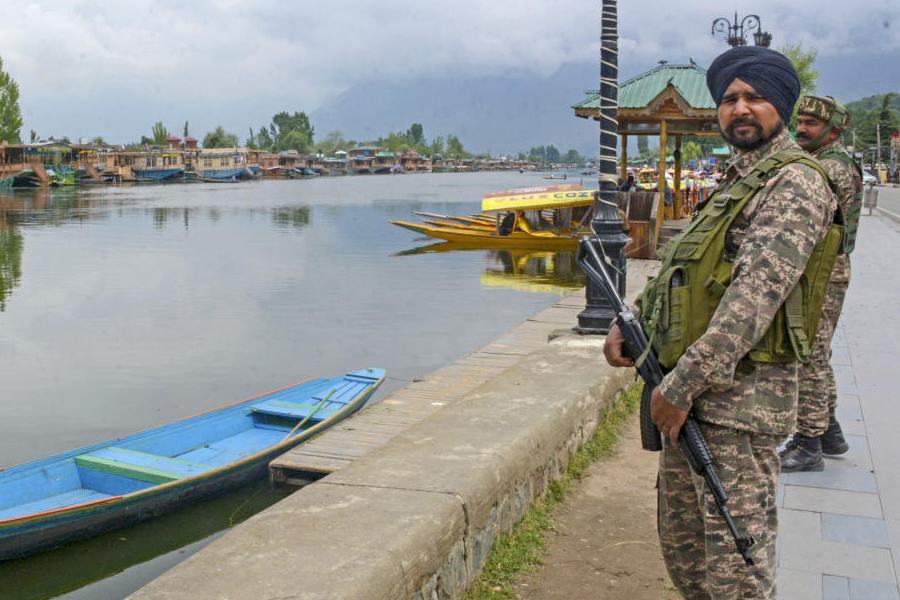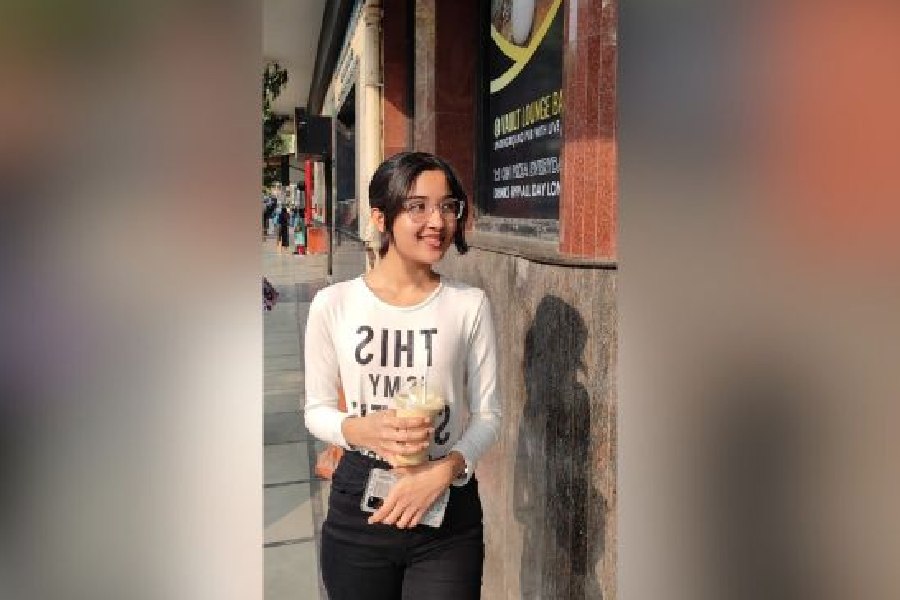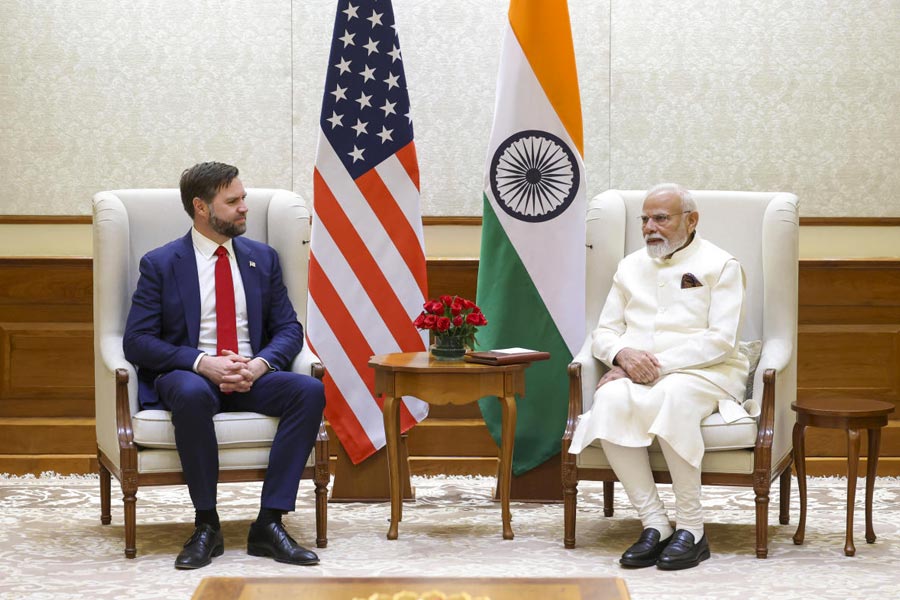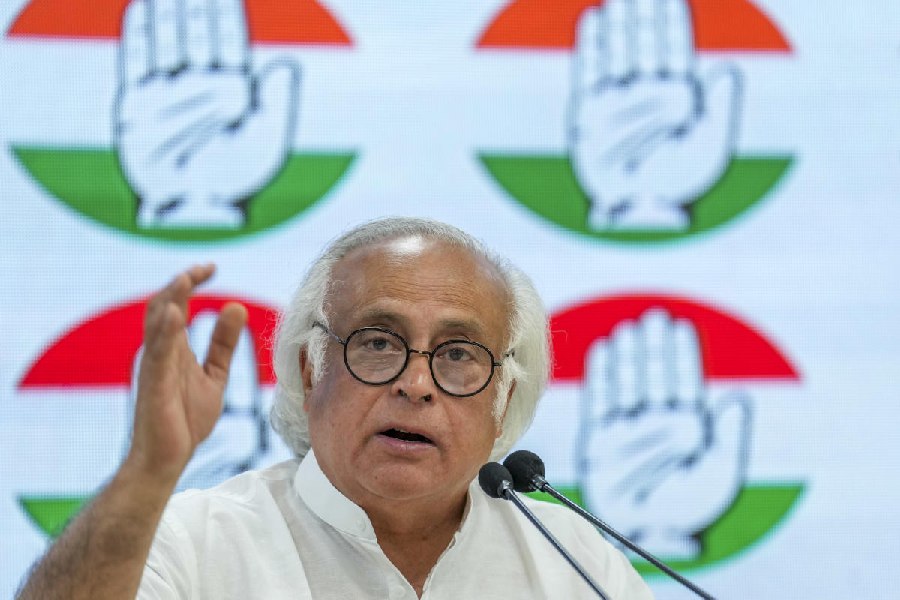 |
| Science exhibition at Government High School in Bhubaneswar Picture by Ashwinee Pati. |
Bhubaneswar, Sept. 10: Science exhibitions intend to help students in their quest for innovation. The aim is to inculcate a scientific temper among students by providing a common platform to schools. The Telegraph visited two ongoing state-level science exhibitions for school students to find out if these efforts actually serve the purpose.
Two state-level science exhibitions were inaugurated in the capital today.
Innovation in science pursuit for inspired research excellence (Inspire) and the state-level science, mathematics and environment exhibition are witnessing a large number of participation but both students and teachers spoke of various loopholes that mar such events.
Problems galore
Short notice: Schools complained of receiving information about competitions at very short notices. “The notices reach us 15 days before the competition and at times even less than that and we hardly have time to prepare. It’s always done in a jiffy and there is absolutely no time to do any serious research or discussion,” said a teacher.
LACK OF TRAINING: There is absolutely no training on how to design better projects for national-level exhibitions and compete with private schools. There are no books or videos for reference in village schools. Often, the projects are repeated year after year with slight modifications here and there to suit the topic of the exhibition.
Unavailability of materials: A teacher complained that one of her students wanted to design a high-speed cycle but couldn’t find materials for a gearbox. “I was told that it will be available in Bhubaneswar or Calcutta and he could not participate,” the teacher said.
Skill training: In reality most students don’t even know how to fit a screw. The department should dedicate at least one period for skill training of students where they can learn the basic mechanical and electronic hacks for everyday use, feel teachers.
Teachers’ model: More often than not, models exhibited at such exhibitions are those ideated by teachers. “This was designed by my physics teacher and he explained the theory to me,” said Priyanshu, a student from Rayagada.
Grab any student: “We do not have the time to select the right student and train them how to speak. Students, who are good debaters, are asked to explain the project. “This gives us a fair chance to be shortlisted for the finals,” a teacher said.
Transportation: Tr-ansporting models remains a great challenge for students and teachers traveling from distant places. “We had to carry the project in three different cartons and then assemble it here. Sometimes students fail to participate after their models get damaged during transit,” said a teacher.
Mismanagement AT VENUE: The heavy rush of students and teachers generally leads to mismanagement at the venue as chaos breaks out with each district trying to get spacious stalls.
“Those who cannot protest are left to a corner and sometimes are not given a table to display their models. Any teacher, who comes to such an event once, will not travel the second time because of the bad experience during the two-day stay,” said a participating guide teacher.
Ongoing events
Innovation in science pursuit for inspired research excellence (Inspire)
This is a national programme implemented by the Union ministry of science and technology. Under this scheme, awardees receive Rs 5,000 each for preparation of the project or model.
Scientific models and exhibits of students of Classes VI-X selected at the district-level exhibitions are on display at the state-level fair.
Only 5-10 per cent of the exhibit on display at the state-level event will qualify for the national-level contest scheduled to be held in October 2014.
State-level science, mathematics and environment exhibition
This programme is being conducted by the NCERT since 1974 to popularise science and mathematics among students.
Five students from each block participate in the district-level science exhibition of which 170 students finally make it to the state-level show.
The best 30 students from the state-level will participate in the eastern science fair at Calcutta. Students short-listed from there will participate in the 42nd Jawaharlal Nehru National Science, Mathematics and Environment exhibition conducted by NCERT.
Participation
More than 900 students from across 30 districts are participating in the competitions being organised at the Unit IX Boys’ High School. The event was inaugurated by school and mass education minister Debi Prasad Mishra.
EXPERTSPEAK: TIPS FROM USHA PADHI
Science exhibitions are organised so that teachers and students give shape to their innovative ideas and learn from each other’s experiences. These exhibitions must be based on creativity by cultivating knowledge and intelligence of the learners.
We have been telling the teachers to refrain from dictating the students and instead let them share their ideas and shape them.
The right way of doing it would be to go out to the villages looking for everyday problems in the locality, discussing it with the students and asking them for solutions and ideas.
The teacher’s duty is to pick up the workable ideas and help the students design them. This will give the students an opportunity to reason, think, experiment, analyse and explore. I am sure the students of government schools will go miles ahead in their quest for innovation. It is the role of teachers to inculcate in their students skills to question, reason and think beyond their text.
(The author is secretary, school & mass education dept)


